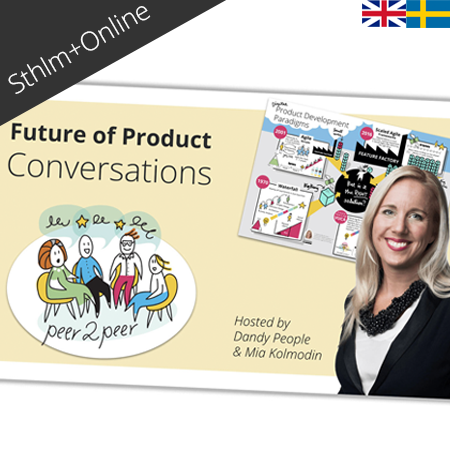The recruiting and onboarding process is something that often has to be adapted when organizations “go Agile”. We were curious about what can be done to adapt the process for the people working with recruiting, what it would mean for the candidate, and how and what to look for when hiring for Agility. So we got together as a cross-functional team to look at this with our different perspectives, Frida Mangen, known from the popular pod Agila HR-podden, Thomas Eklöf, and Nils Hallén, both experts on recruiting and authors of books like “Innovative Recruiting (in Swedish), Björn Sandberg Agile HR and transformation expert at Dandy, and myself, to see if we could create a poster as a first step. The work of creating the poster started in October 2019 and was paused a bit during COVID19. Now we are so happy to be able to share it with you after 8 months!
Free Download of the Poster
ENGLISH: Free Download of the Agile Recruiting in a Nutshell poster here (PDF) >
SPANISH: Free Download of Reclutamiento ágil en pocas palabras >
SIMPLIFIED CHINESE: Free Download of the Agile Recruiting in a Nutshell poster here (PDF) >
BUY: printed A1 poster >
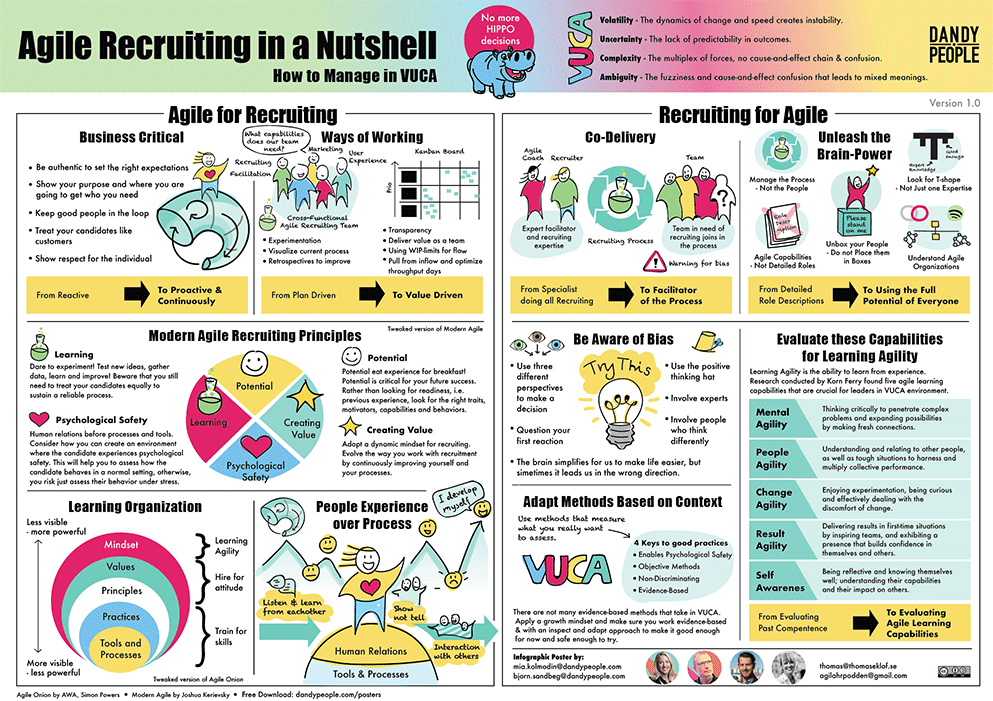
Modern Agile Recruiting Principles
You can think of these principles as a lighthouse. If you are in sight of the light you are on the right path, but if you lose sight of it then you are probably off course.
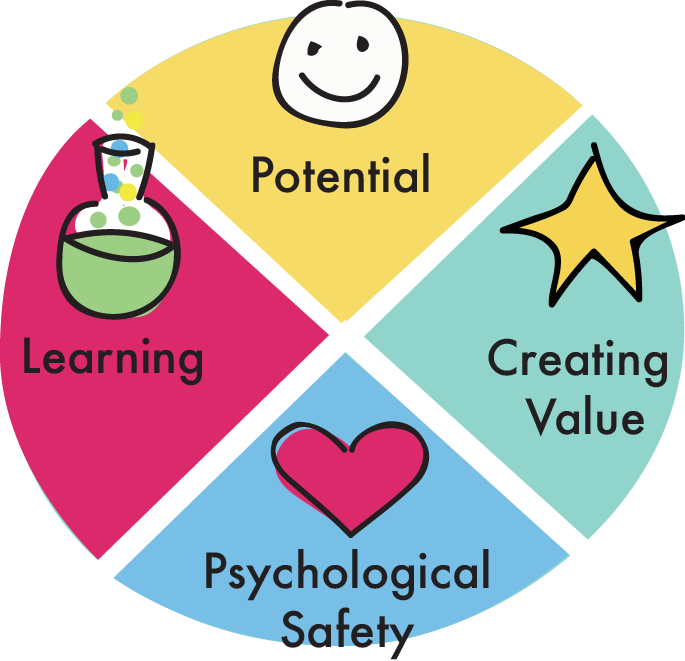
Learning
Dare to experiment! Test new ideas, gather data, learn, and improve! Beware that you still need to treat your candidates equally to sustain a reliable process.
Psychological Safety
Human relations before processes and tools. Consider how you can create an environment where the candidate experiences psychological safety. This will help you to assess how the candidate behaves in a normal setting, otherwise, you risk just assess their behavior under stress.
Potential
Potential eat experience for breakfast! Potential is critical for your future success. Rather than looking for readiness, i.e. previous experience, look for the right traits, motivators, capabilities, and behaviors.
Creating Value
Adopt a dynamic mindset for recruiting. Evolve the way you work with recruitment by continuously improving yourself and your processes.
We all love how Modern Agile supports everyone thinking and acting in ways that support Agility, that is why we created a version of the Modern Agile by Joshua Kerievsky specifically for Agile recruiting.
From Reactive – to Proactive and Continuously
To meet the need from high-speed Agile teams the recruiting process needs to be always on-going. We need to keep good people in the loop even though it might not be a match at the moment it can change very quickly. If we have people we have already got to know in different ways we can much quicker get the right people in – and we have time to see that we match from more perspectives.
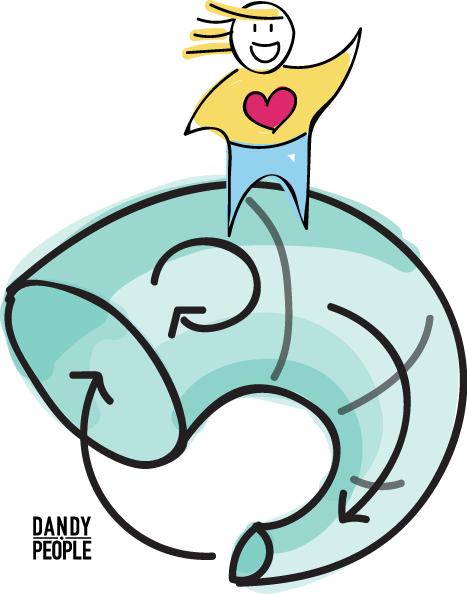
From Plan Driven – to Value Driven
Agile ways of working are about delivering as much value as quickly as possible. We do continuous delivery working as a cross-functional team to take care of the recruitment end to end without handovers, always inspecting and adapting the process to improve. Recruiting is one expertise needed, but also marketing, UX, facilitation, and other competencies as well might be needed in our Agile recruiting team.
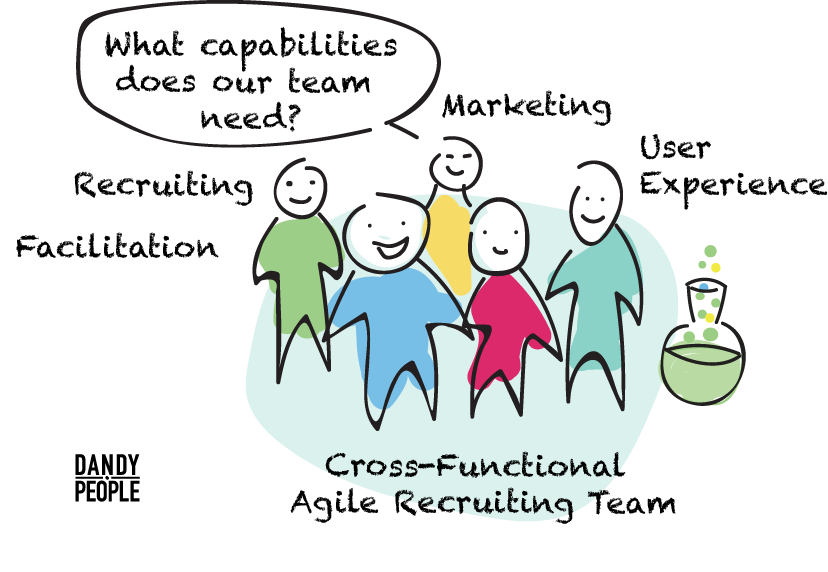
From Specialist Doing all Recruiting – to Facilitator of the Process
In a team-based organization, we know where we have an open position and who will be working closely with the new person. To involve the team in the recruiting process in a good way brings a lot of value. Often the team knows better than anyone what capabilities they would like the new person to bring to the team, and they can support in evaluating those with the support from the recruiter and the Agile Coach. By doing this it is also a great way to test to work together.
We have put a big warning sign for bias here, and the recruiter’s job is to make sure to keep the process free from bias using the 4 keys to good practices: Enables Psychological Safety, Objective Methods, Non-Discriminating and Evidence-Based.
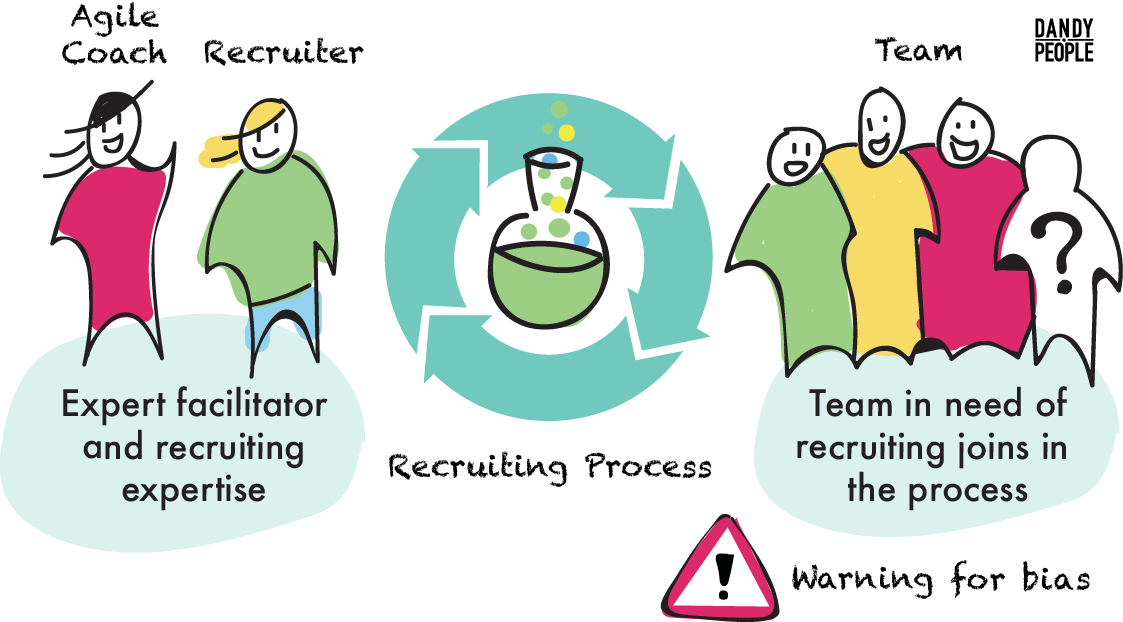
From Detailed Role Descriptions – to Using the Full Potential of Everyone
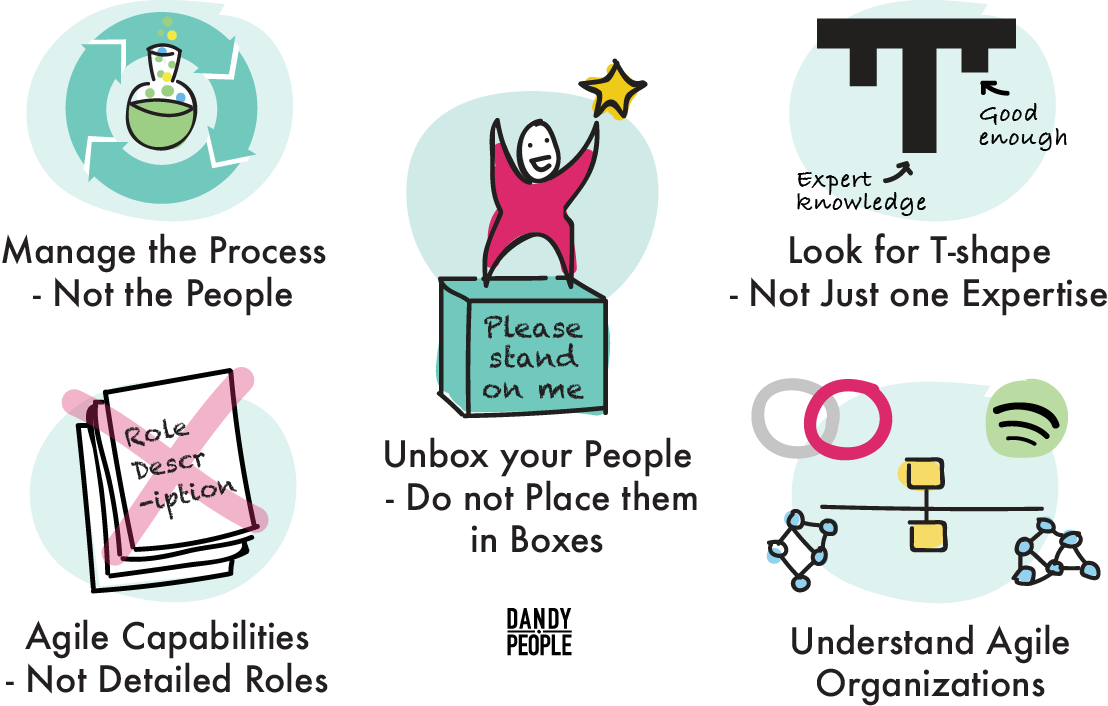
From Evaluating Past Competencies – to Evaluating Agile Learning Capabilities
In the research from Korn Ferry we found 5 interesting dimensions to evaluate to find who would be fit as an Agile leader to handle the uncertainty and complexity in a VUCA-world.
“In three phases of research, they worked from a database of 2,242 managers and executives from 25 companies in four global geographic regions. They drew a sample of 1,245 individuals classified as “high learning agile.” This research identified seven distinct profiles: Problem Solvers; Thought Leaders; Trailblazers; Champions; Pillars; Diplomats; and Energizers. The researchers wrote: “People who are learning agile: Seek out experiences to learn from; enjoy complex problems and challenges associated with new experiences because they have an interest in making sense of them; perform better because they incorporate new skills into their repertoire. A person who is learning agile has more lessons, more tools, and more solutions to draw on when faced with new business challenges.(Hallenbeck, Swisher, and Orr, July 2011). See full article in Forbes >
Regardless of profile, five dimensions are crucial to Learning Agile leaders:
• Mental Agility
Thinking critically to penetrate complex problems and expanding possibilities by making fresh connections.
• People Agility
Understanding and relating to other people, as well as tough situations to harness and multiply collective performance.
• Change Agility
Enjoying experimentation, being curious, and effectively dealing with the discomfort of change.
• Results Agility
Delivering results in first-time situations by inspiring teams, and exhibiting a presence that builds confidence in themselves and others.
• Self-Awareness
Being reflective and knowing themselves well; understanding their capabilities and their impact on others.”
Be Aware of Bias and What to Try
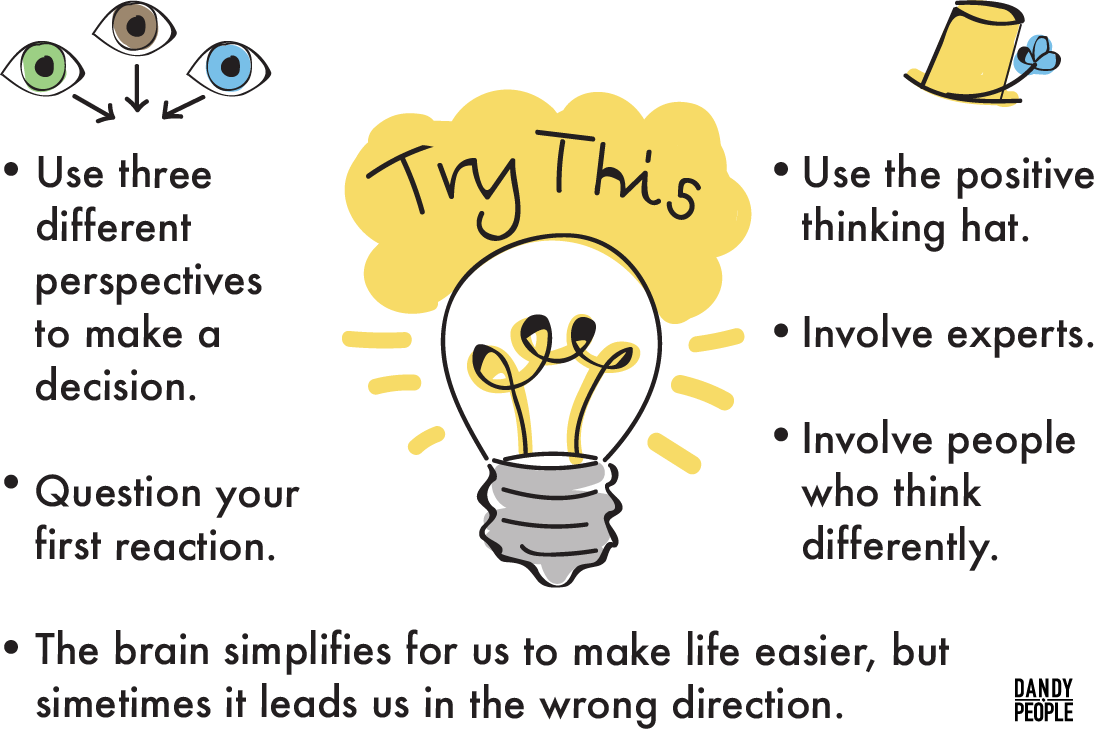
There are not many evidence-based methods that take in VUCA. Apply a growth mindset and make sure you work evidence-based & with an inspect and adapt approach to make it good enough for now and safe enough to try.
4 Keys to good practices to keep in mind while exploring and adapting methods
– Enables Psychological Safety
– Objective Methods
– Non-Discriminating
– Evidence-Based
One of the first prototypes of the poster
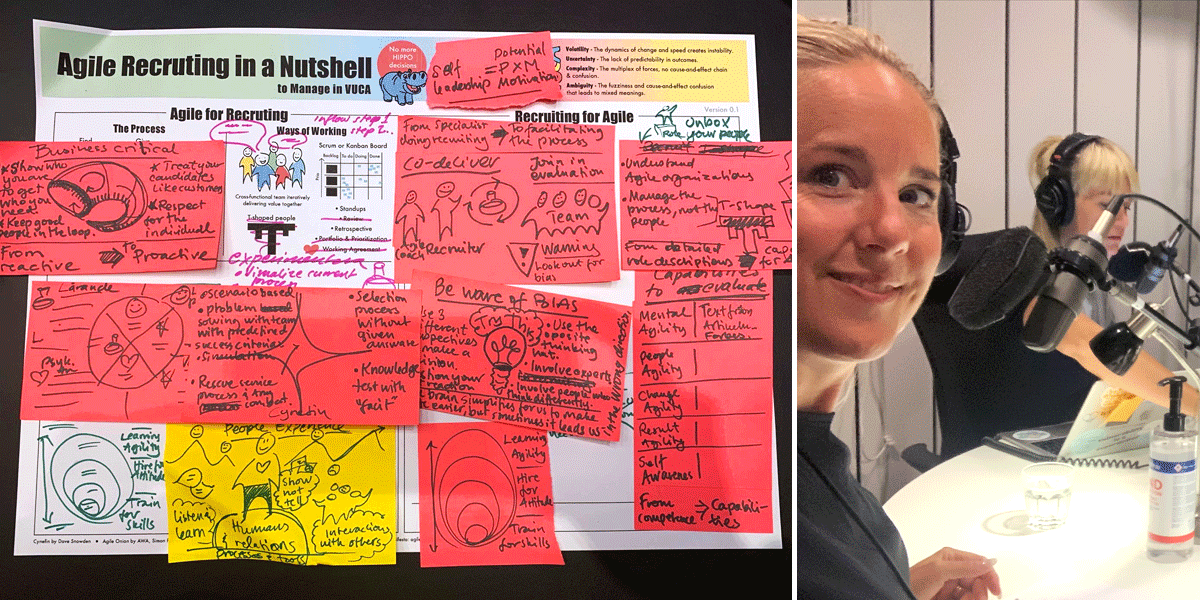
Free to download, use and share
The posters are published under Creative Commons License, so please use it and share it as you like. If you are interested in doing a translation to any other languages please let me know and I will help you with the file and publish it here in the blog as well.
You are free to:
Share — copy and redistribute the material in any medium or format
Adapt — remix, transform, and build upon the material for any purpose, even commercially.
This license is acceptable for Free Cultural Works.
The licensor cannot revoke these freedoms as long as you follow the license terms.
Under the following terms:
Attribution — You must give appropriate credit, provide a link to the license, and indicate if changes were made. You may do so in any reasonable manner, but not in any way that suggests the licensor endorses you or your use.
ShareAlike — If you remix, transform, or build upon the material, you must distribute your contributions under the same license as the original.
No additional restrictions — You may not apply legal terms or technological measures that legally restrict others from doing anything the license permits.

Here you find all the other Free Agile in a Nutshell-posters in the series that is now translated to 14 languages and downloaded over 80.000 times world wide.

